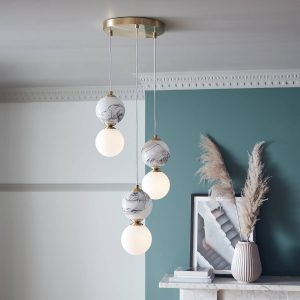
Lighting up Your Workday: The Importance of Effective Office Room Lighting
Lighting is a critical aspect of any office room. The right amount of light can help employees stay alert and focused, reducing eye strain and headaches. However, poor lighting can have the opposite effect, causing fatigue and reducing productivity. Thus, it is important for organizations to ensure that their office rooms have the appropriate lighting to enhance employee well-being and improve work efficiency.
The Importance of Office Room Lighting:
Studies have shown that the amount of light in an office room affects the productivity and satisfaction of employees. Adequate lighting can have a positive impact on a worker’s mood, making them happier and more productive. In comparison, poor lighting quality can cause eyestrain, headaches, and even affect mood negatively, contributing to a lack of focus and productivity.
Furthermore, good office lighting creates a comfortable work environment, providing optimal lighting to conduct tasks quickly and efficiently. Different tasks require varying levels of luminosity, and it is essential to ensure that office lighting accommodates these tasks to reduce eye strain.
Types of Office Lighting:
There are three primary types of lighting: ambient, task and accent, and each serves a specific purpose:
Ambient Lighting:
Ambient lighting refers to the overall lighting of the office room. It acts as the principal source of light and should be bright enough to establish an inviting and comfortable environment. This type of lighting is usually installed on the ceiling as a light fixture or in a wall panel.
Task Lighting:
Task lighting supports specific tasks, providing bright light to perform particular functions like reading documents, typing, and focusing on computer screens. Desk lamps and adjustable lights are examples of task lighting that can be personalized based on employee preferences.
Accent Lighting:
Accent lighting is secondary to ambient and task lighting, providing additional sources of brightness to an area. It can be used to enhance a room’s aesthetics, highlight artwork, and provide visual interest to different corners of the room. This number of illumination is dimmer and typically directed towards a specific object or area.
Considerations for Choosing the Right Office Room Lighting:
Finding the right office room lighting depends on several factors:
Natural Lighting:
It’s essential to take advantage of natural lighting where possible. Consider placing desks and workspaces near windows to take advantage of natural light. This will provide a conducive and refreshing workspace for employees and reduce the need for artificial light throughout the day.
Color Temperature:
Color temperature is essential in creating a functional and comfortable workspace. Warmer light, which appears yellow or orange, creates a more relaxing atmosphere. In contrast, cooler light, which appears blue, is more energizing and preferable for task-oriented areas. Understanding the color temperature of light helps in selecting the appropriate lighting for different areas of the office room.
Lighting Controls:
Lighting controls provide the ability to adjust different lighting types’ brightness in the office room. It enables employees to customize their workspace and improve their lighting to meet their work demands.
Lighting is a vital aspect of any office room that affects employees’ productivity, mood, and overall well-being. Establishing the right balance of ambient, task, and accent lighting while considering natural light sources, color temperature, and lighting controls should be carefully considered when choosing office lighting. By doing so, employees can have an environment that promotes efficient work and positive mental health.
References:
1. U.S. Department of Energy. (2021). Lighting. energy.gov. https://www.energy.gov/energysaver/lighting
2. Facility Executive. (2021). Office Lighting Standards That Give Workers the Glow. Facility Executive. https://facilityexecutive.com/2018/08/office-lighting-standards-that-give-workers-the-glow/
3. Harvard Health Publishing. (2010). Harvard Health Letter. Is Your Office Lighting Making You Drowsy? Good and Bad Lighting for Your Health. https://www.health.harvard.edu/staying-healthy/is-your-office-lighting-making-you-drowsy


